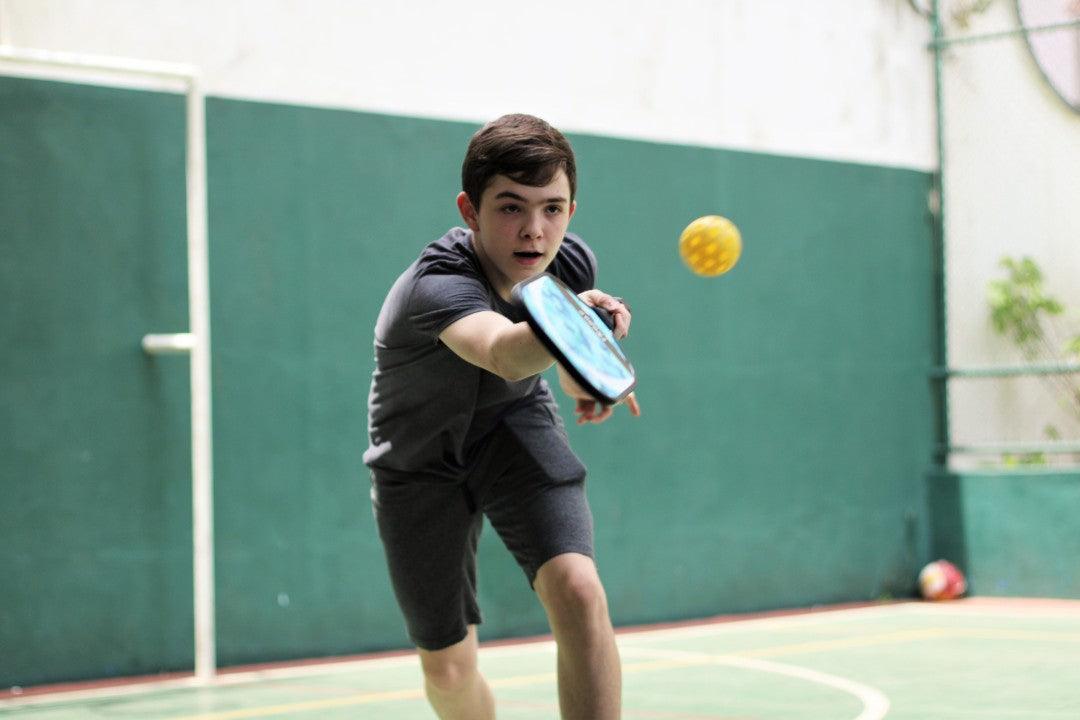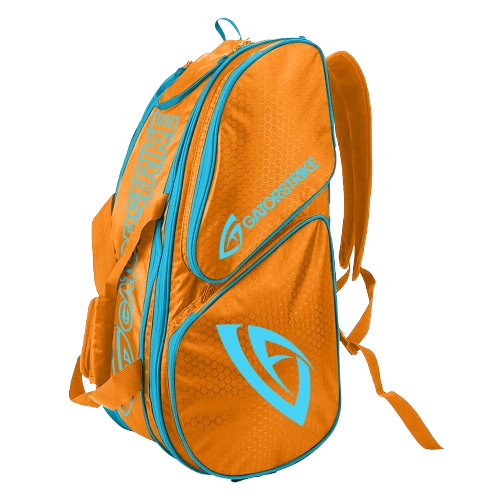
How Pickleball Athletes are Dominating the Courts
Share
The pickleball athletes are changing the sport through professional-level training, strategic play, and unbeatable speed. With elite leagues such as PPA and MLP, these players are transforming the sport. PPA and MLP combine physical endurance with mental ability to take over courts and lead the next generation of players.
The Evolution of Pickleball: From Backyard to Big Leagues
What started as a fun game played in the backyard has grown into a sporting spectacle with players striving to push the boundaries of what was previously thought of as a pastime for the casual. Pickleball is a perfect blend of badminton, tennis, and ping-pong, and has evolved way beyond its humble beginnings. It was once a game that attracted players who were just looking for fun; however, it's now an ideal venue for serious players who are determined to master the nuances of the game. Professional leagues, crowded arenas, and live tournaments have changed the face of the game. The top pickleball players of today have not only elevated their game, but they've transformed the game.
The physical edge: Speed, Strength, and Stamina
To be a dominant player in the professional world of pickleball, athletes need to show the highest level of physical fitness. What separates these players is their ability to combine strength, endurance, speed, and stamina into a seamless bundle of athletic ability. In a sport where quick-twitch muscles are constantly in demand, speed from the mark is crucial. The best players race around the field with astonishing speed in anticipating shots and outwitting their opponents in a matter of seconds.
Long rallies are crucial. They can push even the strongest players to the limit. Training regimens for Pickleball are intense and include cardio exercises, resistance training, and specific exercises for the sport to increase flexibility and speed. A lot of athletes opt for GatorStrike Carbon Strike Paddles due to their light weight, which is ideal for quick transitions as well as aggressive net game play.
"The Mental Game: Strategy and Psychological Warfare
Physical fitness alone won't be enough to win on the court. Pickleball's strategy plays an important role in high-level matches. Professional players approach every match as if it were a chess game and strategize a number of moves ahead. Every shot and placement is intentional--designed to throw the opponent off-balance.
Athletes who excel in pickleball are skilled in analyzing their opponents, identifying patterns, and spotting weaknesses. They also build strong mental resiliency. The pressure to perform psychologically is intense, especially with momentum changing quickly. Players need to remain at peace, adjust after errors, and remain focused during lengthy matches in high-stakes pickleball tournaments.
The art of perfecting Techniques: Dink and Smash The Art of Technique
At the heart of elite players' dominance is their technical proficiency. The"dink," one of the game's most effective shots, requires the utmost precision and finesse to ensure that the ball is low and avoid making errors. However, the smash can unleash the speed and force, often making opponents jump out of the way.
Professional players are aware of the right time to apply pressure or touch, keeping their opponents in the dark. It is the GatorStrike Precision Striker Paddle is frequently a top choice for players looking for control in dinks as well as the ability to play offensively.
"The Science of Footwork: The Art of Footwork: The Court is the Owner
In pickleball, dominance is usually determined by footwork. Players must be able to cover the court in a timely manner and swiftly switch between defensive and offensive positions. The best players appear to glide over playing fields, in anticipation of the ball's movements and directing the court.
When you are preparing to close in to hit a volley or getting ready for a defensive lob, each move is carefully planned. The footwork is an essential element in the advanced training of pickleball and often differentiates ordinary players from the elite.
Training like a Champion: Discipline and dedication
The foundation of every top pickleball player is a strict training regimen. The players are committed to everyday practices that are split between technical training drills that are technical and live match play. In addition, their schedules incorporate training and strength exercises, recovery, and mental coaching.
Recovery and nutrition are equally important. Diets are planned to help the recovery process and endurance, and tools such as GatorStrike's Paddle Strike Wipes assist in keeping gear in place after a session. Yoga stretching, stretching, and even sport therapy are used to ensure that muscles are properly conditioned and injury-free. This dedication to training is the thing that sets professional players in pickleball players apart.
The role of Technology and Data in Modern Pickleball
The current pickleball players aren't just working harder, they're also training more effectively. Video analysis helps coaches and players to analyze every move or shot and rally. These lessons help improve techniques and create smarter game plans.
Wearable technology tracks the performance of players, such as endurance, speed, and reaction time. This method of data-driven development is creating elite players in pickleball who improve each element of their play to stay at the top of their game. Players who can adapt and make use of the latest technology lead both on and off the field.
The rise of Professional Pickleball: Leagues and Global Events
The rise of professional-level pickleball leagues has pushed it into the limelight. Organisations like the Professional Pickleball Association (PPA) and Major League Pickleball (MLP) offer athletes the opportunity to shine.
These leagues attract international players, provide large prize pools, and draw massive crowds. Media coverage and sponsorships have turned pickleball tournaments into major sporting events and have pushed players to new heights and increasing the reach of the game.
Future of Pickleball Dominance Future of Pickleball Dominance
Shortly, the outlook for players in the sport is looking bright. As more players take up the sport, the competition will get fiercer. The latest techniques, strategies, and gear, like the evolving GatorStrike paddles--will continue raising the bar. Athletics will be more intense to adapt quickly, improve their skills, and become more flexible.
This will ensure that professional tennis is growing in both popularity and intensity and could eventually become a major international sport.
Conclusion:
The dominance of the court for pickleball by elite athletes is an important turning point in the sport's development. They are more than just physical ability; they demonstrate discipline as well as strategy and ingenuity. As the sport changes and evolves, so do the players in the game who are responsible for it.
From mental and physical fitness to the choice of gear as well as data integration, the current generation of players is are true master of their art. They're not only creating the game, they're also building its history, one mighty rally at a time.
FAQs
Who are the most successful players in the world of pickleball?
Ben Johns, Anna Leigh Waters, as well as Tyson McGuffin are some of the most famous names in the world of professional pickleball.
What is the way professional players prepare?
They are focused on exercises on the court and strength training, as well as mental coaching and nutrition to keep their bodies in peak condition.
What equipment do the top pickleballers utilize?
They favor lightweight and powerful paddles, such as those of the GatorStrike Carbon Strike Paddle, along with other GatorStrike equipment designed to provide serious performance.
Are there professional leagues for pickleball?
Yes, that includes PPA Tour and MLP, which host tournaments around the world for the best players.
What distinguishes pickleball athletes from players who play recreationally?
Professional athletes invest in top-quality training, employing the latest technology and using the utmost precision and strategic level.

















